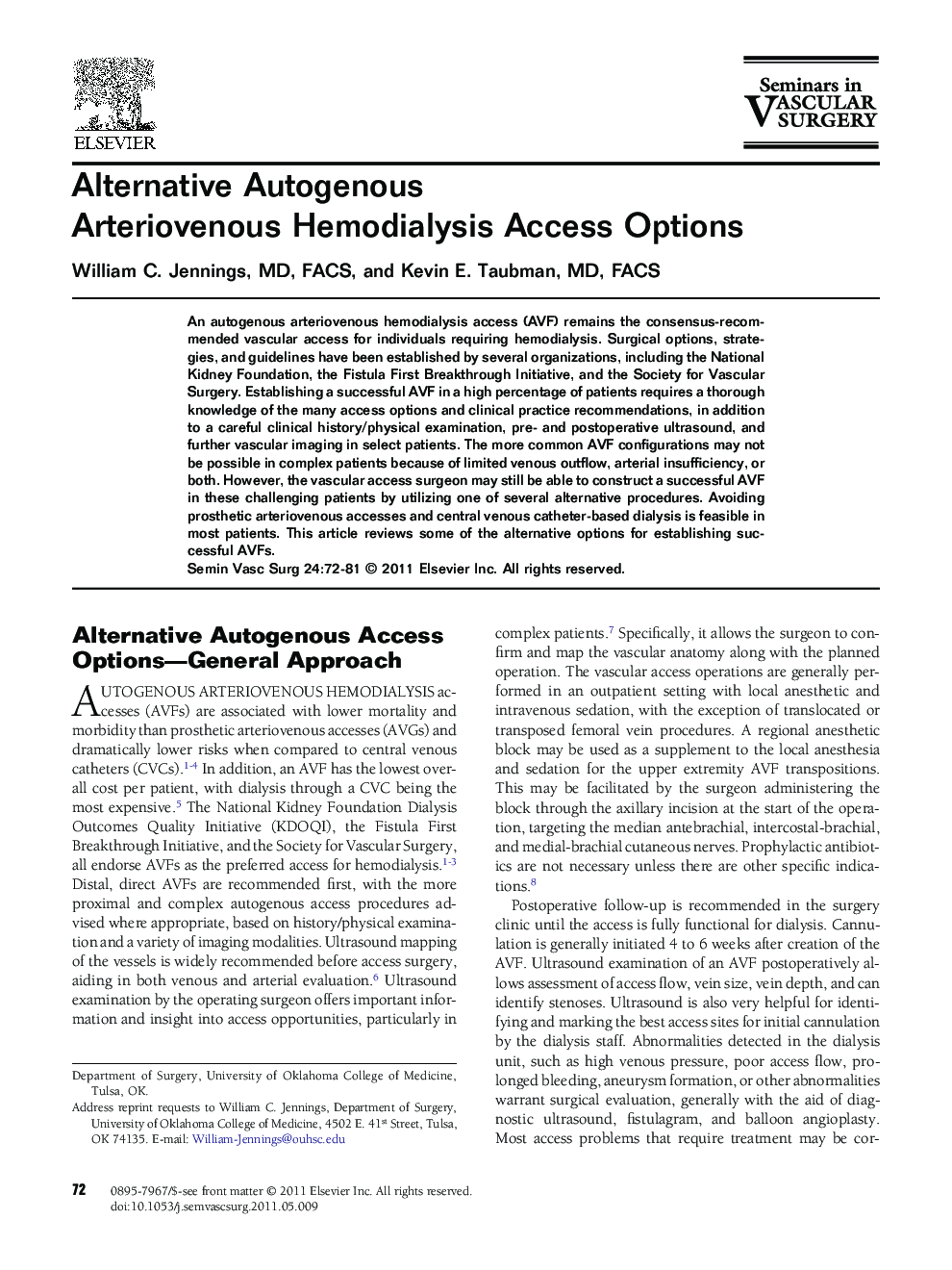| Article ID | Journal | Published Year | Pages | File Type |
|---|---|---|---|---|
| 3026213 | Seminars in Vascular Surgery | 2011 | 10 Pages |
An autogenous arteriovenous hemodialysis access (AVF) remains the consensus-recommended vascular access for individuals requiring hemodialysis. Surgical options, strategies, and guidelines have been established by several organizations, including the National Kidney Foundation, the Fistula First Breakthrough Initiative, and the Society for Vascular Surgery. Establishing a successful AVF in a high percentage of patients requires a thorough knowledge of the many access options and clinical practice recommendations, in addition to a careful clinical history/physical examination, pre- and postoperative ultrasound, and further vascular imaging in select patients. The more common AVF configurations may not be possible in complex patients because of limited venous outflow, arterial insufficiency, or both. However, the vascular access surgeon may still be able to construct a successful AVF in these challenging patients by utilizing one of several alternative procedures. Avoiding prosthetic arteriovenous accesses and central venous catheter-based dialysis is feasible in most patients. This article reviews some of the alternative options for establishing successful AVFs.
